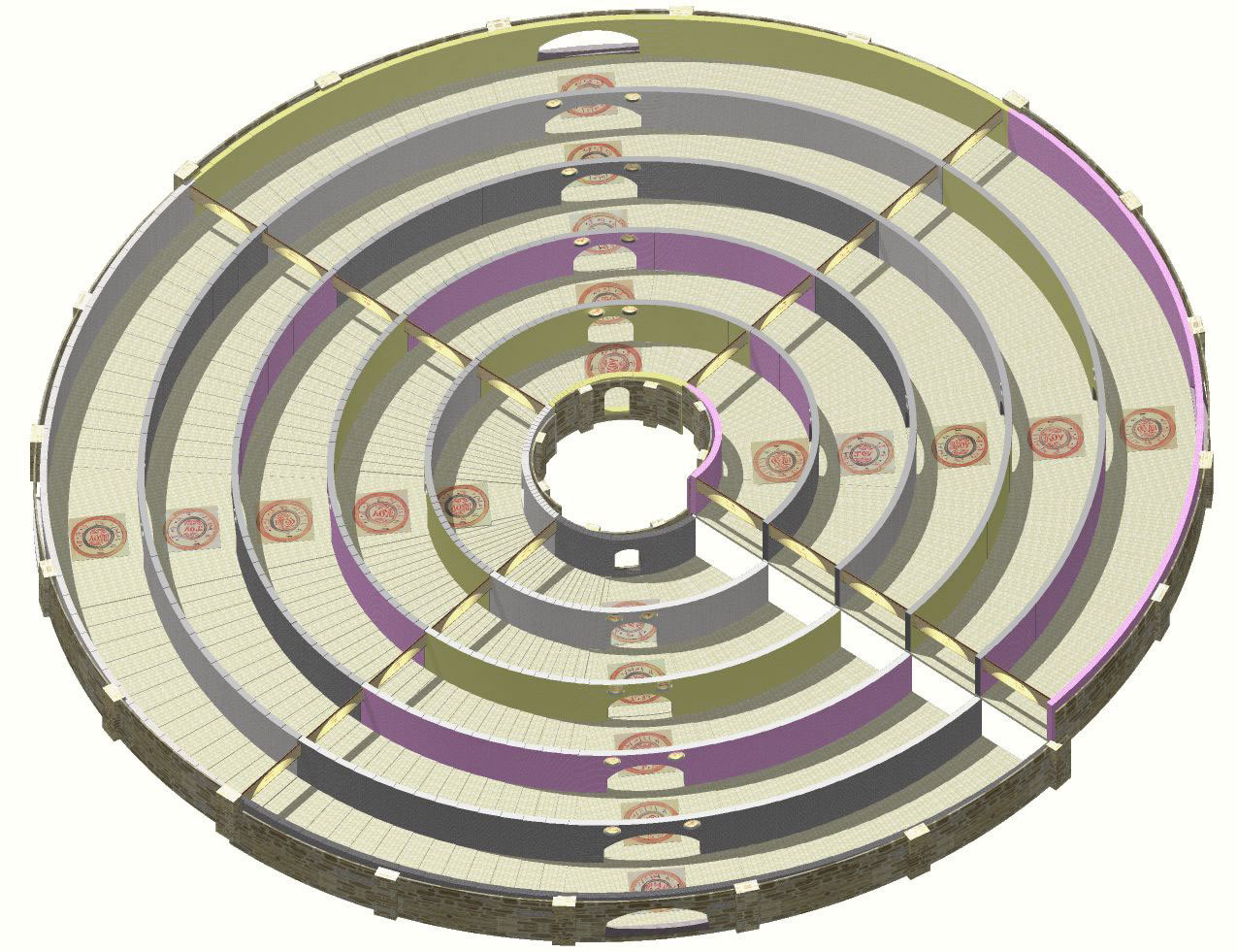Traditions in dialogue
The personal homepage of Oliver Gerlach

This is a labyrinth which was constructed and designed on the base of the Koukouzelian wheel. The latter was invented and used by Byzantine singers during the end of 13th century to walk through different modes and through all possible transpositions of the tonal system within one piece of music.
Therefore this labyrinth represents an “Eastern” thinking in music, as it can be found in the Greek and Arabic reception of the ancient Greek music theory which treated three forms of change (metavolē):
- metavolē kata tonon: the transposition of the whole tonal system in order to find a mode based on an unexpected pitch (as degree of the tonal system)
- metavolē kata genos: the change of the musical genos, the main genos of medieval eight mode system (oktōēchos) was the diatonic genos which could be temporarily coloured or “destroyed” by a phthora. Phthora nana was used to enter the enharmonic genos und phthora nenanō to enter the chromatic genos.
- metavolē kata systēma: the change between tonal systems, because musicians used the systēma teleion (today usually recognised by the white keys of the keyboard), but also a system build on pentachords similar like re - mi - fa - sol - la re (systēma kata tetraphōnian): Γ - D - a - e - hh etc., and a system build on tetrachords similar like ut - re - mi - fa ut (systēma kata triphōnian): Γ - C - F - b - es etc. The last was supposed to meet the enharmonic genos. The former tetraphonic is incorporated in the form of the wheel and in the labyrinth.
This thinking in music was replaced by a simplification of music theory during the Carolingian era in the Latin middle ages (8th and 9th century), because cantors and theorists established a verdict against the use of transposition within one piece of liturgical chant, because they used it to work out a clear modal classification. But musicians in Andalusian Spain, in its provinces in northern Africa, in the caliphate and in the Byzantine empire kept using it, as musicians do today in a lot of different music traditions of the Mediterranean.
During the 9th century more manuscripts of Ancient Greek science and philosophy were translated into Arabic and Persian dialects in the three metropoles of the Mediterranean world: Baghdad, Cairo and Córdoba. The interest of the Muslim world in Hellenic culture created one of the most modern civilizations of the middle ages. The last war in Iraq destroyed the last library which had survived from this time:
Site of the Oriental Institute in Chicago: Lost Treasures from Iraq
But studies in Hellenic culture are still dependent on studies of its Arabic reception - a language which was used as language of science by Semitic authors like Maimonides, Ibn Sina, Ibn Arabi etc. -, because the majority of the Greek sources did not survive today. Some ancient Greek libraries were burnt down: that of Alexandria by Julius Caesar as a consequence of his war, the Platonic Academy in Athens was closed down for political reasons by the Byzantine emperor Justinian, who preferred to have the Agia Sophia as the intellectual centre patronized by the patriarchate, and even 80% of the books (some of them also containing Latin translations) in the Mezquita library of Córdoba were burnt by converted Berbers, who were asked once again to fight for the Andalusian caliphate.
Even in music, which was as well regarded as science since the time of Pythagoras, this labyrinth, a memorial landscape ascribed to Constantinopolitan singer Ioannes Koukouzeles still can hold together the different civilitations of the Mediterranean world and can be used to get a deeper understanding of its music traditions.